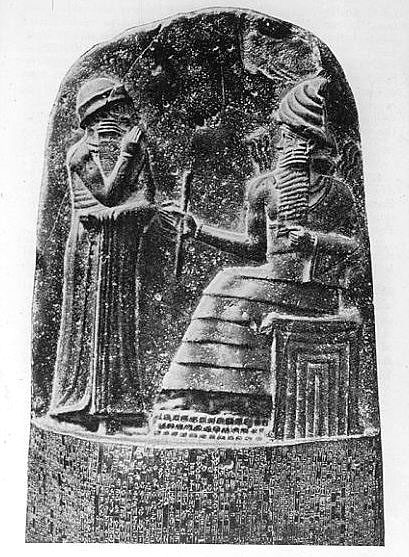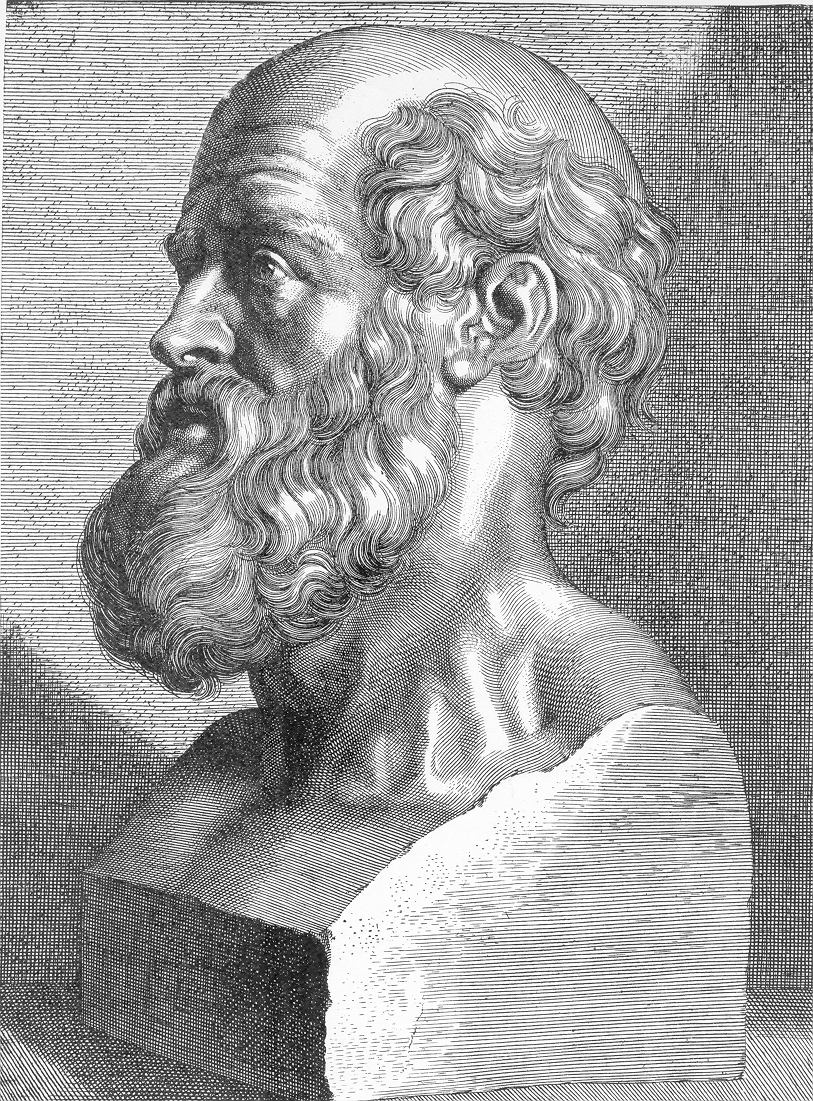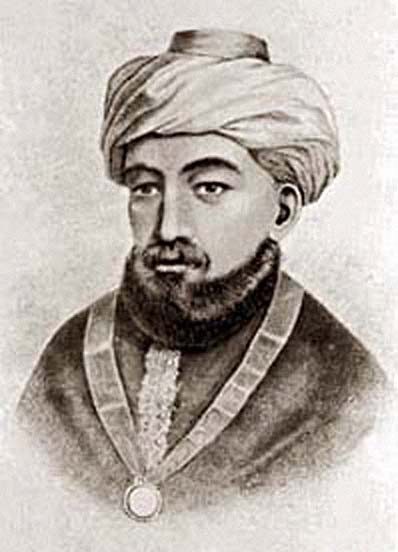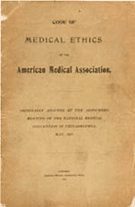L.J. Sandlow
Chicago, Illinois, USA
Introduction
Medical oaths are solemn pledges taken by medical students as they complete their training and enter the practice of medicine. Oaths and codes summarize the profession’s mission to protect and restore human health. Taking an oath is the hallmark of a physician’s commitment to his profession. Present in all the major civilizations, its recorded history goes back 10,000 years, with versions from the Mesopotamian, Egyptian, Greek, Jewish, Muslim, Indian, and Chinese cultures.
Each of these distinct cultures’ medical codes or oaths share many common elements. These selections from the more prominent codes reveal their common threads: (1) a basic patient-doctor covenant, (2) respect to God(s) and higher powers, (3) respect for teachers, (4) assurance and improvement of the profession, (5) concern for sexual propriety, (6) respect for preservation of life.
Through history the codes have developed from a short list of class-based, judicial rules regarding compensation to the list of specific ethical and professional responsibilities exemplified in the modern charter. This development can be attributed to the various religious or social mores of the time or region.

The code of Hammurabi
Hammurabi (ca. 1792–1750 BCE) united all of Mesopotamia under his rule as king of Babylon. Currently on display in the Louvre Museum, his code of 282 laws is one of the best-preserved legal documents of the various Sumerian city states of Mesopotamia. The code largely regulated judicial law based on social status, but partly provided guidelines that emphasized medicine’s concept of non-malfeasance or “do no harm.” The laws that were relevant to physicians regulated malpractice and compensation.
- 215. If a physician make a large incision with an operating knife and cure it, or if he open a tumor (over the eye) with an operating knife, and saves the eye, he shall receive ten shekels in money.
- 216. If the patient be a freed man, he receives five shekels.
- 217. If he be the slave of some one, his owner shall give the physician two shekels.
- 218. If a physician make a large incision with the operating knife, and kill him, or open a tumor with the operating knife, and cut out the eye, his hands shall be cut off.
- 219. If a physician make a large incision in the slave of a freed man, and kill him, he shall replace the slave with another slave.
- 220. If he had opened a tumor with the operating knife, and put out his eye, he shall pay half his value.
- 221. If a physician heal the broken bone or diseased soft part of a man, the patient shall pay the physician five shekels in money.
- 222. If he were a freed man he shall pay three shekels.
- 223. If he were a slave his owner shall pay the physician two shekels.
Vaidya’s oath
This oath, taken by Hindu physicians around the 15th century BCE, expanded the idea of non-malfeasance from the physician’s practice to his lifestyle. It required physicians to abstain from eating meat, drinking, or committing adultery.
- You must put behind you desire, anger, greed, folly, pride, egotism, jealousy, harshness, calumny, falsehood, sloth, and improper conduct. With short-cut nails, ritually clean and clad in the orange garment, you must be pledged to truth, and full of reverence in addressing me . . .
- If, however, you behave perfectly, while I profess false views, I shall be guilty of sin and my knowledge shall bear me no fruit.
- (after having finished your studies) with your medicaments you shall assist Brahmins, venerable persons, poor people, women, ascetics, pious people seeking your assistance, widows and orphans, and any one you meet on your errands, as if they were your own relatives. This will be right conduct . . .
The Hippocratic oath
Hippocrates of Cos (ca.450–380 BCE) was a physician and author of the Corpus hippocraticum, one of the first compendia on clinical medicine and medical ethics. It outlines the principles of conduct physicians are expected to abide by when treating patients.

The original version
I swear by Apollo, the healer, Asclepius, Hygeia, and Panacea, and I take to witness all the gods, all the goddesses, to keep according to my ability and my judgment, the following Oath and agreement:
To consider dear to me, as my parents, him who taught me this art; to live in common with him and, if necessary, to share my goods with him; To look upon his children as my own brothers, to teach them this art.
I will prescribe regimens for the good of my patients according to my ability and my judgment and never do harm to anyone.
I will not give a lethal drug to anyone if I am asked, nor will I advise such a plan; and similarly I will not give a woman a pessary to cause an abortion.
But I will preserve the purity of my life and my arts.
I will not cut for stone, even for patients in whom the disease is manifest; I will leave this operation to be performed by practitioners, specialists in this art.
In every house where I come I will enter only for the good of my patients, keeping myself far from all intentional ill-doing and all seduction and especially from the pleasures of love with women or with men, be they free or slaves.
All that may come to my knowledge in the exercise of my profession or in daily commerce with men, which ought not to be spread abroad, I will keep secret and will never reveal.
If I keep this oath faithfully, may I enjoy my life and practice my art, respected by all men and in all times; but if I swerve from it or violate it, may the reverse be my lot.
There are several versions of this oath, many of which are currently recited by graduates of American medical schools. The Declaration of Geneva was based on the Hippocratic Oath but was altered to consider more modern social mores (e.g. sexual orientation).
The “latest” version: Declaration of Geneva 2006
I solemnly pledge to consecrate my life to the service of humanity.
I will give my teachers the respect and gratitude that is their due.
I will practice my profession with conscience and dignity.
The health of my patient will be my first consideration.
I will respect the secrets that are confided in me, even after the patient has died.
I will maintain by all means in my power, the honor and the noble traditions of the medical profession.
My colleagues will be my sisters and brothers.
I will not permit consideration of age, disease or disability, creed, ethnic origin, gender, nationality, political affiliation, race, sexual orientation, social standing, or any other factor to intervene between my duty and my patient.
I will maintain the utmost respect for human life.
I will not use my medical knowledge to violate human rights and civil liberties, even under threat.
I make these promises solemnly, freely, and upon my honor.
The oath of Asaph
This Hebrew oath was taught to students of Asaph and Yohanan in the 6th century CE. It included ethical standards regarding the sanctity of life (euthanasia and abortion), bribery, and doctor-patient confidentiality.
Do not attempt to kill any soul by means of a potion of herbs,
Do not make a woman [who is] pregnant [as a result of] of whoring take a drink with a view to causing abortion,
Do not covet beauty of form in women with a view to fornicating with them,
Do not divulge the secret of a man who has trusted you,
Do not take any reward [which may be offered in order to induce you] to destroy and to ruin,
Do not harden your heart [and turn it away] from pitying the poor and healing the needy,
Do not say of [what is] good; it is bad, nor of [what is] bad; it is good,
Do not adopt the ways of the sorcerers using [as they do] charms, augury, and sorcery in order to separate a man from the wife of his bosom or a woman from the companion of her youth,
You shall not covet any wealth or reward [which may be offered in order to induce you] to help in a lustful desire,
You shall not seek help in any idolatrous [worship] so as to heal through [a recourse to idols], and you shall not heal with anything [pertaining] to their worship,
But on the contrary detest and abhor and hate all those who worship them, put their trust in them, and give assurance [referring] to them,
For they are all naught, useless, for they are nothing, demons, spirits of the dead; they cannot help their own corpses, how then could they help those who live?
Now [then] put your trust in the Lord, your God, [who is] a true God, a living God,
For [it is] He who kills and makes alive, who wounds and heals,
Who teaches men knowledge and also to profit,
Who wounds with justice and righteousness, and who heals with pity and compassion,
No designs of [His] sagacity are beyond His [power]
And nothing is hidden from His eyes.
The oath of Sun Simiao
Sun Simiao (581–682 CE), also known as the “Chinese Hippocrates” or China’s “King of Medicine,” was the famous doctor of the Sui and Tang Dynasty. Often called “the Chinese Hippocratic Oath,” his monograph On the absolute sincerity of great physicians is required reading for Chinese physicians to this day. His oath emphasized compassion as a basic medical practice and required the physician to consider the patient as if he were a relative.
A Great Physician should not pay attention to status, wealth or age; neither should he question whether the particular person is attractive or unattractive, whether he is an enemy or friend, whether he is a Chinese or a foreigner, or finally, whether he is uneducated or educated. He should meet everyone on equal grounds. He should always act as if he were thinking of his close relatives.
The prayer and the oath of Maimonides

Moses ben-Maimon or Maimonides (1135–1204 CE) was a medieval Jewish physician, rabbi, and philosopher. He wrote several religious, legal, and philosophical works. The code of conduct for medical practitioners listed here was probably penned by German physician Marcus Herz, but it resembles the core of Maimonides’ practice. There are two passages: The “Prayer of Maimonides” (a physician’s morning ritual) and the “Oath of Maimonides” (recited at ceremony). Unique to the prayer is the physician’s acceptance of the profession as a learning process.
The prayer of Maimonides
Grant that my patients have confidence in me and my art and follow my directions and my counsel. Remove from their midst all charlatans and the whole host of vicious relatives and know-all nurses, cruel people who arrogantly frustrate the wisest purposes of our art and often lead Thy creatures to their death.
Should those who are wiser than I wish to improve and instruct me, let my soul gratefully follow their guidance; for vast is the extent of our art. Should conceited fools, however, censure me, then let love for my profession steel me against them, so that I remain steadfast without regard for age, for reputation, or for honor, because surrender would bring to Thy creatures sickness and death.
Imbue my soul with gentleness and calmness when older colleagues, proud of their age, wish to displace me or to scorn me or disdainfully to teach me. May even this be of advantage to me, for they know many things of which I am ignorant, but let not their arrogance give me pain. For they are old and old age is not master of the passions. I also hope to attain old age upon this earth, before Thee, Almighty God!
Let me be contented in everything except in the great science of my profession. Never allow the thought to arise in me that I have attained to sufficient knowledge, but vouchsafe to me the strength, the leisure and the ambition ever to extend my knowledge. For art is great, but the mind of man is ever expanding.
Almighty God! Thou hast chosen me in Thy mercy to watch over the life and death of Thy creatures. I now apply myself to my profession. Support me in this great task so that it may benefit mankind, for without Thy help not even the least thing will succeed.
The 17 rules of Enjuin
The Seventeen Rules of Enjuin are a code of conduct developed for students of the Japanese Ri-shu school of medicine in the 16th century CE. These rules require physicians to work together with others of their trade as a brotherhood. The guidelines regarded conduct not only in action but also in mind, prohibiting immoral feelings when examining a woman.
- Each person should follow the path designated by Heaven (Buddha, the gods).
- You should always be kind to people. You should always be devoted to loving people.
- The teaching of Medicine should be restricted to selected persons.
- You should not tell others what you are taught, regarding treatments without permission.
- You should not establish association with doctors who do not belong to this school.
- All the successors and descendants of the disciples of this school shall follow the teachers’ ways.
- If any disciples cease the practice of Medicine, or, if successors are not found at the death of the disciple, all the medical books of this school should be returned to the School of Enjuin.
- You should not kill living creatures, nor should you admire hunting or fishing.
- In our school, teaching about poisons is prohibited, nor should you receive instructions about poisons from other physicians. Moreover, you should not give abortives to the people.
- You should rescue even such patients as you dislike or hate. You should do virtuous acts, but in such a way that they do not become known to people. To do good deeds secretly is a mark of virtue.
- You should not exhibit avarice and you must not strain to become famous. You should not rebuke or reprove a patient, even if he does not present you with money or goods in gratitude.
- You should be delighted if, after treating a patient without success, the patient receives medicine from another physician, and is cured.
- You should not speak ill of other physicians.
- You should not tell what you have learned from the time you enter a woman’s room, and, moreover, you should not have obscene or immoral feelings when examining a woman.
- Proper or not, you should not tell others what you have learned in lectures, or what you have learned about prescribing medicine.
- You should not like undue extravagance. If you like such living, your avarice will increase, and you will lose the ability to be kind to others.
- If you do not keep the rules and regulations of this school, then you will be cancelled as a disciple. In more severe cases, the punishment will be greater.
American Medical Association code of ethics

The American Medical Association’s principles promulgate the essential standards of conduct towards the patient. It emphasizes the physician’s responsibility not only to patients, but also to society, to other health professionals, and to the self. While it references all the major themes of past historical oaths, the AMA code allows the physician more freedom in choosing who they serve, how they run their practice, and their lifestyle.
- The medical profession has long subscribed to a body of ethical statements developed primarily for the benefit of the patient.
- A physician shall deal honestly with patients and colleagues, and strive to expose those physicians deficient in character or competence, or who engage in fraud or deception.
- A physician shall respect the law and also recognize a responsibility to seek changes in those requirements which are contrary to the best interests of the patient.
- A physician shall respect the rights of patients, of colleagues, and of other health professionals, and shall safeguard patient confidences within the constraints of the law.
- A physician shall continue to study, apply and advance scientific knowledge, make relevant information available to patients, colleagues, and the public, obtain consultation, and use the talents of other health professionals when indicated.
- A physician shall, in the provision of appropriate patient care, except in emergencies, be free to choose whom to serve, with whom to associate, and the environment in which to provide medical services.
- A physician shall recognize a responsibility to participate in activities contributing to an improved community.
The ABIM physician charter
Today, the oaths have evolved into a charter, the ABIM physician charter. It reintroduces a detailed list of the principles and responsibilities of the physician and calls on the collective to dedicate themselves not only to the patient, but also to the improvement of the healthcare system for the welfare of society.
Fundamental principles
Principle of primacy of patient welfare. The principle is based on a dedication to serving the interest of the patient. Altruism contributes to the trust that is central to the physician-patient relationship. Market forces, societal pressures, and administrative exigencies must not compromise this principle.
Principle of patient autonomy. Physicians must have respect for patient autonomy. Physicians must be honest with their patients and empower them to make informed decisions about their treatment. Patients’ decisions about their care must be paramount, as long as those decisions are in keeping with ethical practice and do not lead to demands for inappropriate care.
Principle of social justice. The medical profession must promote justice in the health care system, including the fair distribution of health care resources. Physicians should work actively to eliminate discrimination in health care, whether based on race, gender, socioeconomic status, ethnicity, religion, or any other social category.
A set of professional responsibilities
Commitment to professional competence. Physicians must be committed to lifelong learning and be responsible for maintaining the medical knowledge and clinical and team skills necessary for the provision of quality care. More broadly, the profession as a whole must strive to see that all of its members are competent and must ensure that appropriate mechanisms are available for physicians to accomplish this goal.
Commitment to honesty with patients. Physicians must ensure that patients are completely and honestly informed before the patient has consented to treatment and after treatment has occurred. This expectation does not mean that patients should be involved in every minute decision about medical care; rather, they must be empowered to decide on the course of therapy. Physicians should also acknowledge that in health care, medical errors that injure patients do sometimes occur. Whenever patients are injured as a consequence of medical care, patients should be informed promptly because failure to do so seriously compromises patient and societal trust. Reporting and analyzing medical mistakes provide the basis for appropriate prevention and improvement strategies and for appropriate compensation to injured parties.
Commitment to patient confidentiality. Earning the trust and confidence of patients requires that appropriate confidentiality safeguards be applied to disclosure of patient information. This commitment extends to discussions with persons acting on a patient’s behalf when obtaining the patient’s own consent is not feasible. Fulfilling the commitment to confidentiality is more pressing now than ever before, given the widespread use of electronic information systems for compiling patient data and an increasing availability of genetic information. Physicians recognize, however, that their commitment to patient confidentiality must occasionally yield to overriding considerations in the public interest (for example, when patients endanger others).
Commitment to maintaining appropriate relations with patients. Given the inherent vulnerability and dependency of patients, certain relationships between physicians and patients must be avoided. In particular, physicians should never exploit patients for any sexual advantage, personal financial gain, or other private purpose.
Conclusion
Today, an emphasis on professionalism is stressed both in medical education and practice. The physician’s reputation, both on rounds and outside of work, reflects on the reputation of the hospital and the profession. Pledging to protect and restore human health while offering mutual respect builds trust within a doctor-and-patient relationship. Each written with an understanding of a doctor’s tendency to focus on diagnoses and cures, the ethical aspects within these oaths remind the physician view the patient as a whole—so we do not forget to heal.
Further reading
- ABIM Foundation. “Medical professionalism in the new millennium: a physician charter.” (2011).
- American College of Allergy, Asthma & Immunology. “American Medical Association Code of Ethics.” (June 17, 2001) http://www.acaai.org/about/Pages/code-of-ethics.aspx (accessed June 1, 2011).
- Halsall, Paul. “Hammurabi’s Code of Laws.”Internet Ancient History Sourcebook. (1998) http://www.fordham.edu/halsall/ancient/hamcode.html (accessed June 1, 2011).
- Johns Hopkins University. “Oath and Prayer of Maimonides.” The Sheridan Libraries. http://guides.library.jhu.edu/content.php?pid=23699&sid=190571 (accessed June 1, 2011).
- Wikipedia the Free Encyclopedia. “Declaration of Geneva.” (March 6, 2011) http://en.wikipedia.org/wiki/Declaration_of_Geneva (accessed June 1, 2011).
- Wikipedia the Free Encyclopedia. “Hippocratic Oath.” (June 1, 2011) http://en.wikipedia.org/wiki/Hippocratic_Oath (accessed June 1, 2011).
- Wikipedia the Free Encyclopedia. “Oath of Asaph.” (March 7, 2011) http://en.wikipedia.org/wiki/Oath_of_Asaph (accessed June 1, 2011).
- Wikipedia the Free Encyclopedia. “Oath of the Hindu Physician.” (March 7, 2011) http://en.wikipedia.org/wiki/Oath_of_the_Hindu_physician (accessed June 1, 2011).
- Wikipedia the Free Encyclopedia. “Seventeen Rules of Enjuin” (October 9, 2010) http://en.wikipedia.org/wiki/Seventeen_Rules_of_Enjuin (accessed June 1, 2011).
- Wikipedia the Free Encyclopedia. “Sun Simiao.” ( April 29. 2011) http://en.wikipedia.org/wiki/Sun_Simiao (accessed June 1, 2011).
- Yanofsky, Charles. “A Catalogue of Physician’s Oaths.” (2004).
L.J. SANDLOW, MD, has been involved in medical education for over 40 years. He is currently head of the department of medical education and senior associate dean for educational affairs at the University of Illinois at Chicago College of Medicine. Since 1969 he has planned, developed, and implemented medical education programs ranging from residency programs, the medical student curriculum, and continuing education programs. From 1976 to 1989 Dr. Sandlow was responsible for the management and coordination of graduate medical education programs at Michael Reese Hospital and Medical Center, during which time he developed one of the first methodologies for internal review of residencies, which was later utilized in several institutions.
Highlighted in Frontispiece Volume 3, Issue 3 – Fall 2011

Leave a Reply